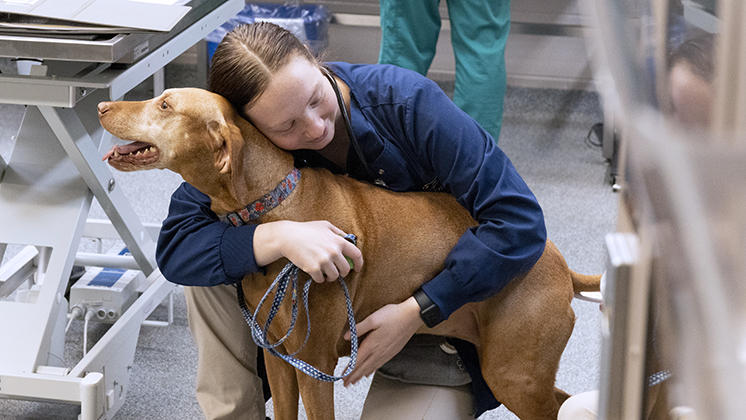Training a dog is a rewarding yet challenging endeavor that requires patience, consistency, and know-how. Are you struggling to teach your furry friend basic commands or address unwanted behaviors? Look no further! In this blog, “Unleashing Success: How to Train a Dog Like a Pro,” we will explore the essential techniques and tips to train your dog effectively. Whether you have a new puppy or an older dog, mastering the art of training is crucial for a harmonious relationship with your pet. Join us as we delve into the world of positive reinforcement, obedience training, and problem-solving strategies to unleash your dog’s full potential.
You don’t train a dog to be more human, the point is to train yourself to be more dog #dogtor #MedTwitter #bemoredog pic.twitter.com/unYhiLXKCf
— Dr Karan (@drkaranrajan) April 5, 2021
Introduction to Dog Training
Training your dog is essential for a harmonious relationship between you and your furry friend. Proper training helps in building obedience, improving behavior, and enhancing the bond with your pet.
The Importance of Training
Dog training not only helps in controlling unruly behaviors but also provides mental stimulation and physical exercise for your pet. A well-trained dog is a joy to be around and can participate in various activities with you.
Basic Training Commands
Teaching commands like sit, stay, come, and heel are fundamental for effective communication with your dog. Consistent training sessions and positive reinforcement are key to instilling these commands.
- Sit Command: Teach your dog to sit by using treats and praise.
- Stay Command: Practice the stay command to improve your dog’s impulse control.
- Come Command: Recall training is crucial for your dog’s safety in various situations.
- Heel Command: Teaching your dog to walk beside you without pulling on the leash.

The Importance of Proper Training
Proper training is essential when it comes to transforming your dog into a well-behaved and obedient companion. Training not only helps in shaping your dog’s behavior but also strengthens the bond between you and your furry friend. With the right training techniques, you can teach your dog important commands, improve their social skills, and address any behavioral issues they may have.
Building Trust and Communication
Training your dog creates a foundation of trust and communication between you and your pet. By consistently working with your dog on commands and behaviors, you establish a common language that allows you to effectively communicate your expectations. This clear communication fosters trust and respect, leading to a harmonious relationship.
Establishing trust and communication with your dog through training also helps in preventing future behavioral problems, as your dog will understand what is expected of them in various situations.
Enhancing Overall Well-Being
Proper training contributes to your dog’s overall well-being by providing mental stimulation and physical exercise. Engaging in training sessions keeps your dog mentally sharp and helps prevent boredom, which can lead to destructive behaviors.
Regular training also ensures that your dog gets the necessary physical activity, promoting good health and preventing obesity. A well-trained and stimulated dog is a happy and balanced dog.
Understanding Your Dog’s Behavior
Understanding your dog’s behavior is crucial in how to train a dog effectively. Dogs communicate through body language, barks, and actions, reflecting their emotional state and needs.
Body Language Signals
Dogs use various body language cues to express themselves. Common signals include wagging tails, relaxed body posture, raised hackles, and lip licking. Learning to interpret these cues helps you understand your dog’s feelings and intentions.
Socialization Importance
Socializing your dog is crucial for their mental well-being. Proper socialization from puppyhood to adulthood teaches them how to interact with other dogs and humans in a positive manner.
- Expose your dog to various environments, people, and animals for a well-rounded socialization experience.
- Positive interactions promote confidence and reduce fear-based behaviors.
Basic Training Techniques
When it comes to how to train a dog effectively, understanding basic training techniques is essential. Training your dog can be a rewarding experience for both you and your furry friend. Below are some key techniques to help you train your dog like a pro:
1. Positive Reinforcement
Using positive reinforcement is one of the most effective ways to train your dog. Rewarding good behavior with treats or praise helps your dog associate positive outcomes with specific actions.
2. Consistency
Consistency is key when training your dog. Establishing a consistent routine helps your dog understand what is expected of them. Be consistent with commands and rewards.
3. Patience and Practice
Training a dog takes time, patience, and practice. Practice training sessions regularly to reinforce learning. Remember, every dog is different, so be patient and consistent in your training approach.
Advanced Training Methods
When it comes to how to train a dog, advanced training methods can take your pup’s skills to the next level. Embracing innovative techniques ensures a well-rounded and obedient dog.
1. Target Training
Target training is a versatile method that involves teaching your dog to touch a specific object with different body parts. This can improve focus and dexterity.
For example, guiding your dog to touch a target stick with their nose or paw can refine their coordination skills.
2. Brain Games
Engaging your dog in brain games such as puzzle toys and scent work can stimulate their cognitive abilities.
This mental stimulation enhances their problem-solving skills and provides a fun way to keep them mentally active.

Problem-Solving: Dealing with Behavioral Issues
When training a dog, behavioral issues may arise, causing challenges in the training process. It’s essential to address these issues effectively to ensure a successful training outcome.
Identifying the Behavior Problem
One crucial step in addressing behavioral issues is identifying the root cause of the problem. Whether it’s aggression, fear, or disobedience, understanding the trigger is key to implementing the right solution.
Observing the dog’s body language and responses carefully can provide valuable insights into the underlying issue.
Implementing Positive Reinforcement Techniques
Using positive reinforcement techniques can effectively address behavioral issues in dogs. Rewarding desired behaviors with treats or praise can encourage the dog to exhibit the desired behavior more frequently.
- Consistency in rewarding good behavior is crucial to reinforce positive habits.
- Training sessions should be kept short and engaging to maintain the dog’s interest.
Tips for Consistent Training
Consistency is key when training your dog. By following these tips, you can ensure effective and successful training sessions.
Set Clear Goals
Define what behaviors you want to reinforce or modify in your dog. Setting clear goals helps both you and your furry friend stay focused.
Be consistent with your commands and rewards to maintain a steady progress.
Establish a Routine
Creating a consistent training schedule helps your dog understand what to expect and when. Consistent practice leads to successful outcomes.
- Include short and frequent training sessions in your daily routine.
- Practice at the same time and in the same location to reinforce learning.
Utilizing Positive Reinforcement
When it comes to how to train a dog, positive reinforcement is a powerful and effective method that focuses on rewarding desired behaviors rather than punishing unwanted ones. By using positive reinforcement, you can encourage your dog to repeat behaviors that you approve of, making the training process more enjoyable for both you and your furry friend.
The Power of Rewards
One key aspect of positive reinforcement is the use of rewards such as treats, praise, or toys to reinforce good behavior. When your dog associates these rewards with performing the desired action, they are more likely to repeat it.
Rewards should be given immediately after the desired behavior occurs to strengthen the connection between the action and the reward. This helps your dog understand what they did right and encourages them to do it again.
Consistency is Key
Consistency is crucial when using positive reinforcement to train your dog. It’s important to reward the behavior you want to see every time it occurs to avoid confusion.
Setting clear expectations and being consistent in your approach will help your dog understand what is expected of them, making the training process more effective.
Frequently Asked Questions
- Why is training important for dogs?
- Training is important for dogs as it helps in establishing a bond between the owner and the pet, ensures obedience, improves behavior, and can even keep the dog safe in various situations.
- How can I start training my dog?
- To start training your dog, you can begin with basic commands such as sit, stay, come, and then gradually move on to more advanced training techniques based on your dog’s breed and temperament.
- Is positive reinforcement effective in dog training?
- Yes, positive reinforcement is highly effective in dog training. It involves rewarding your dog for exhibiting desired behaviors, which encourages them to repeat those behaviors in the future.
- How can I handle behavioral issues during training?
- When facing behavioral issues during training, it’s important to stay patient, consistent, and seek professional help if needed. Understanding the root cause of the behavior can help in addressing it effectively.
- What are some common mistakes to avoid while training a dog?
- Some common mistakes to avoid while training a dog include inconsistency, using punishment-based techniques, expecting too much too soon, and not providing enough mental and physical stimulation.
Unleash Your Dog’s Potential Today!
Training your dog is a rewarding journey that strengthens the bond between you and your furry companion. By consistently using positive reinforcement, setting clear boundaries, and being patient, you can guide your dog towards success. Remember to tailor your training methods to suit your dog’s breed and personality for the best results. Whether you are teaching basic commands or advanced tricks, the key is to stay dedicated and make training sessions fun and engaging. By understanding your dog’s needs and behaviors, you can create a harmonious relationship built on trust and respect. Start training like a pro today and watch your dog shine! In summary, patience, consistency, and love are the keys to successful dog training.

